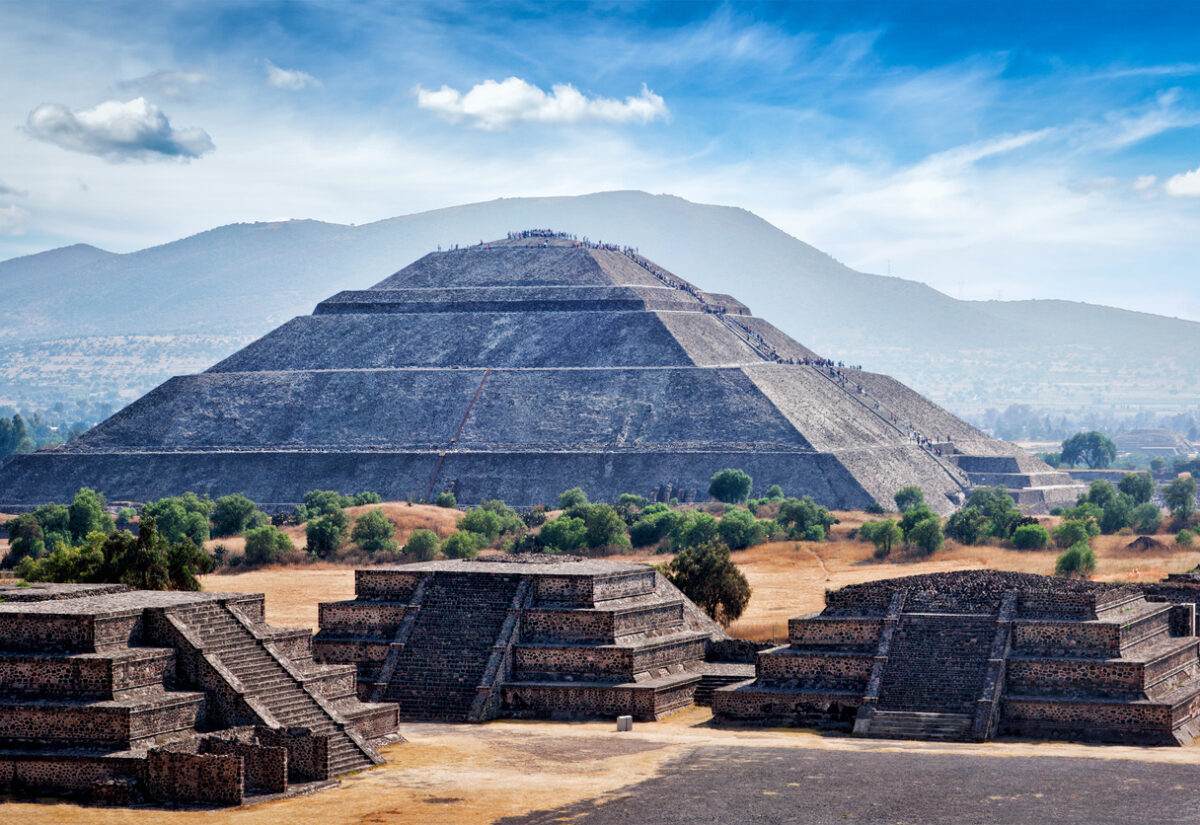 Getty Images/iStockphoto
Getty Images/iStockphotoFrom intricately aligned stone circles to structures built with mathematical precision, there are ancient sites around the world that seem to defy the limits of their time. While our ancestors didn’t have electricity, modern machinery, or digital tools, they created monuments and cities with engineering that still baffles experts today. Whether through advanced understanding of astronomy, geometry, or construction techniques, these places continue to inspire awe—and questions. Here are some of the most fascinating ancient sites that show just how advanced early civilisations could be.
1. Göbekli Tepe, Turkey
Built over 11,000 years ago—well before Stonehenge or the Egyptian pyramids—Göbekli Tepe is often called the world’s oldest known temple. With massive stone pillars arranged in circles, some weighing up to 20 tonnes, it’s a feat of engineering that predates the invention of writing or even agriculture.
The level of planning and labour involved has led archaeologists to reconsider assumptions about the capabilities of hunter-gatherer societies. How were such heavy stones moved without wheels or beasts of burden? Research from the German Archaeological Institute continues to shed light on this mysterious site.
2. The Antikythera Mechanism, Greece
While not a site in itself, the discovery of the Antikythera Mechanism off the coast of Greece in 1901 changed our understanding of ancient technology. Dated to around 150 BCE, it’s a mechanical device made of bronze gears that could predict astronomical positions and eclipses.
Often described as the world’s first analogue computer, its complexity wasn’t matched for at least another thousand years. The University of London’s UCL research team has reconstructed parts of it and confirmed just how sophisticated this artefact was.
3. Sacsayhuamán, Peru
Located just outside Cusco, Sacsayhuamán is a fortress built by the Inca with stones so precisely cut and fitted that a knife blade can’t fit between them. Some of these stones weigh over 100 tonnes, yet they were transported and assembled without mortar—and without metal tools, according to most accounts.
The site’s zigzagging walls were designed to absorb seismic shocks, helping the structure withstand earthquakes that have levelled more modern buildings. The engineering skill and logistical planning required remain largely unexplained by conventional means.
4. Derinkuyu, Turkey
This underground city in Cappadocia is one of the largest and deepest in the world. It extends over 18 storeys and could house up to 20,000 people, complete with ventilation shafts, wine cellars, and even a school.
Thought to have been started by the Phrygians in the 8th century BCE and later expanded by Byzantines, it’s a masterclass in subterranean design. How they managed airflow, waste disposal, and lighting in such a vast underground space still amazes modern engineers.
5. Stonehenge, England
Everyone knows Stonehenge, but few realise just how precise it is. Built over several stages from around 3000 BCE, the monument’s stones are aligned with the movements of the sun and moon with remarkable accuracy.
The stones—some weighing over 25 tonnes—were transported from as far as 150 miles away. Theories abound about how this was accomplished, from sledges and rollers to sophisticated logistics networks. English Heritage continues to explore new findings about its construction.
6. Teotihuacan, Mexico
At its peak around 500 CE, Teotihuacan was one of the largest cities in the world, with a population of over 100,000. Its layout shows evidence of careful city planning, including a grid system and advanced drainage.
The Pyramid of the Sun, one of the largest in the world, is aligned with astronomical phenomena, and recent findings suggest the builders used a type of mica that would have enhanced energy conduction. While some claims stretch into the speculative, there’s no doubt the city’s design reflects an advanced understanding of architecture and urban planning.
7. The Roman concrete marvels, Europe and North Africa
Roman engineers developed a type of concrete that could set underwater and has proven more durable than many modern equivalents. Structures like the Pantheon, aqueducts, and sea walls still stand today in part because of this innovation.
Modern researchers have studied the mineral composition of Roman concrete to understand its resilience. A 2017 study revealed that it strengthens over time due to a rare chemical reaction between volcanic ash and seawater—something modern concrete doesn’t do.
8. Puma Punku, Bolivia
Part of the Tiwanaku complex, Puma Punku features megalithic stones cut with almost machine-like precision. Some have perfectly straight cuts and right angles that seem out of place in a site estimated to be at least 1,000 years old.
Debates rage over how the stones were shaped—especially as the Andes region had no written language or wheeled transport. While alternative theories abound, the craftsmanship alone is enough to baffle engineers.
9. The Nabataean water system, Jordan
The Nabataeans, who built Petra, also developed an incredibly advanced water management system in a desert region. They used dams, channels, cisterns, and underground reservoirs to collect and store water.
Their methods allowed a thriving civilisation to flourish in one of the harshest climates on Earth. Many of these systems are still intact, and ongoing studies—like those by UNESCO—show how sustainable and effective they were.
10. The Great Pyramid of Giza, Egypt
No list would be complete without the Great Pyramid, built around 2560 BCE. Standing 146 metres tall originally, it remained the tallest man-made structure in the world for over 3,800 years. Its alignment to the cardinal points is nearly perfect, and the precision with which its 2.3 million blocks were laid remains astonishing.
Despite endless studies, we still don’t know exactly how it was built. Theories range from massive ramps to ingenious counterweight systems. It’s amazing how little we still understand about this engineering marvel.
These ancient sites are a testament to human ingenuity. Far from being primitive, many ancient civilisations had knowledge and techniques that allowed them to create structures still standing today—many of which would be hard to replicate even with modern technology. They challenge our assumptions and show that the past was often more advanced than we give it credit for.



